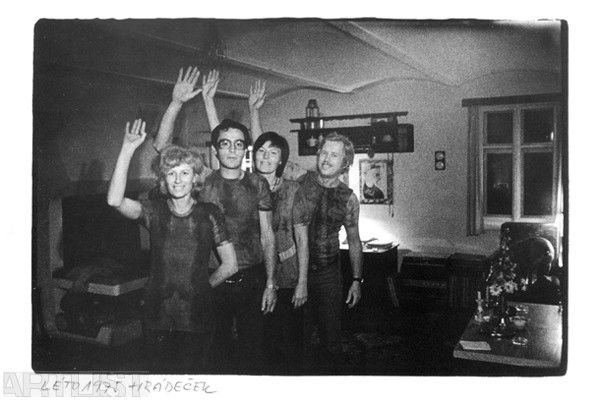17. 4. 2024 seminar of accidental wisdom: Bohdan Holomníček

seminar of accidental wisdom: Bohdan Holomníček
17.4.2024
Bohdan Holomíček was born in 1943 in Ukraine into a family of Volhynian Czechs. They moved to northern Bohemia when he was four years old. He received his first camera, Smena, as a child and has been continuously engaged in photography ever since. He did not attend any photography school and spent most of his life working as an electrician, installer, and maintenance worker. He has been making a living exclusively from photography since the 1990s.
He has long been devoted to theater photography. Since the 1970s, he collaborated with Divadlo Na tahu, later with Divadlo Na zábradlí, Činoherní klub, Švandovo divadlo, Divadlo Komedie, Ha Divadlo, and theaters in Ústí nad Labem, Hradec Králové, Pardubice, and notably the National Theatre, where he also documented the backstage areas, workshops, and theater operations.
His work often revolves around the concept of a photographic diary. The amount of film he exposed (annually over a thousand) reveals his working method. The vast number of captured moments outlines a subjective history of recent Czech events, subjective in terms of a personal approach to the world and people. Holomíček narrates and people become part of his endless story of the past as represented through photography.
His unmistakable method of installing and describing photos has become a part of his signature style. Thanks to his enlargements, we still know what an ordinary photographic paper Document is. Like other documentarians (Hochová, Štreit), he did not crop his images and left them bordered by a black frame (sometimes doubled by a car window frame). He then wrote captions in the remaining white space on the paper, often including the year, supplemented by a brief transcript of what was said at the time, often also the place where the photo was taken. Sometimes it is no longer clear where and when the captured event took place. In such cases, it shows that Holomíček does not claim objectivity, but that the photographs are mediators of personal memories, sometimes uncertain: "I know where, I don't know when", "probably 1986", "near...", "maybe 1990". Since the late 1980s, he has exhibited such unenlarged and described photographs in rows next to and above each other. He does not present individual images but creates sets of pictures that function as wholes. As if the significance of the photographed emerges only by connecting with other captured moments. The mosaic of photographs allows working with what is in the space between. This method of installation creates conditions in which their further lives develop.
Holomíček enjoys sending photographs back into circulation – giving them to people featured in them. Or he creates and emphasizes a story by how he arranges the photos in authorial books. It seems that his main goal is to build networks of relationships through photographs (both among individual images and among people). This fits with his favorite assertion that the destination is not important, but the journey is. Holomíček has photographed countless people, from ordinary ones to icons of dissent (in the 1970s he met Václav and Olga Havels and became a documentarian of social and cultural events at Hrádeček and elsewhere). However, one motif to which he constantly returns is a simple path leading off the road. This particular path, which still attracts him, captured in a vast number of shots from various times, reflects his thinking. Sometimes, the photographer's hand appears in the frame, reminding of his own presence, as if he wanted to touch the moment when the present turns into the past.
In an endless series of self-portraits, Holomíček creates the most subjective document of the recent past and present. Although he claims that he does not pursue specific themes, he continues to engage with his themes even after switching to digital technology in 2003. The search for authorship and journey connects the black-and-white analog past with the digital present. He gradually digitizes his extensive archive and lately presents photographs through projections.
Hana Buddeus, Artlist